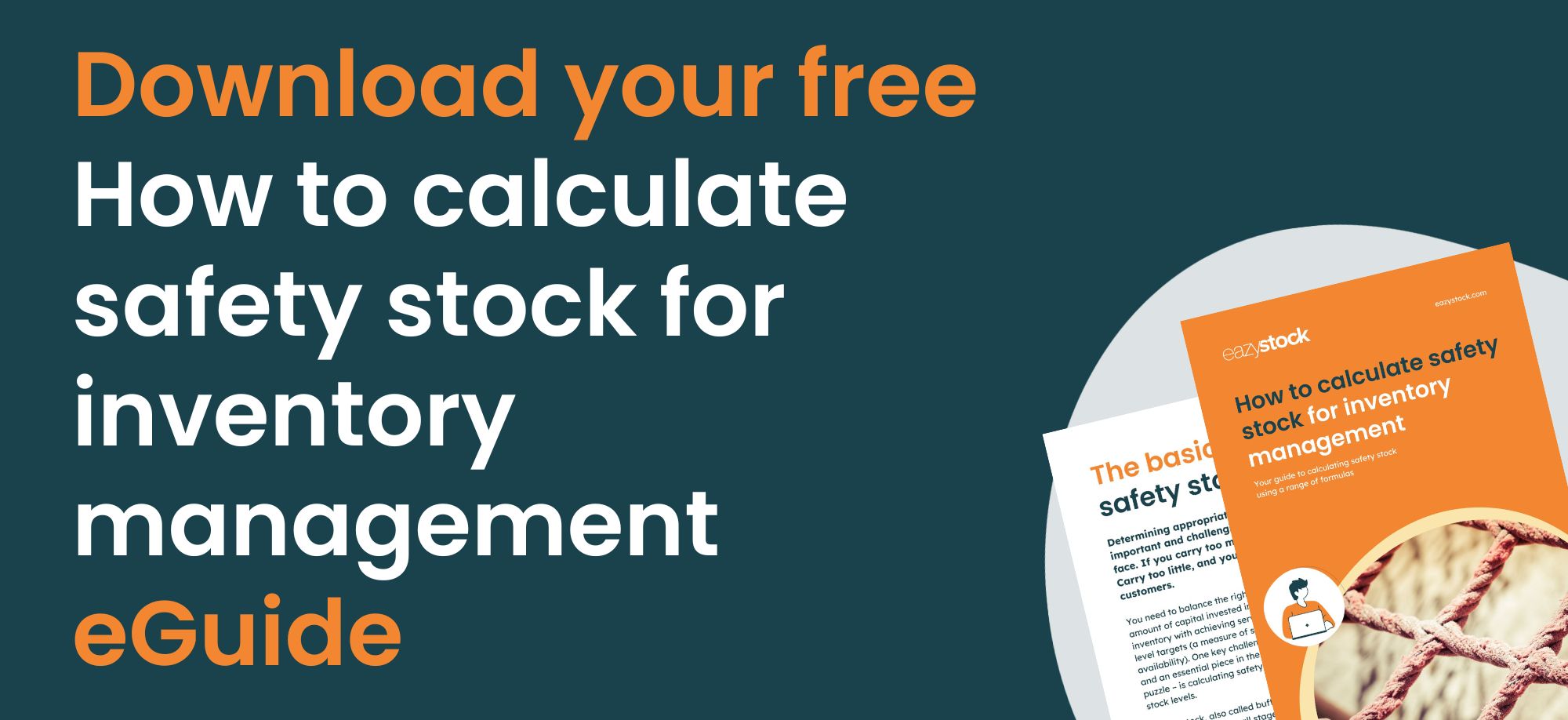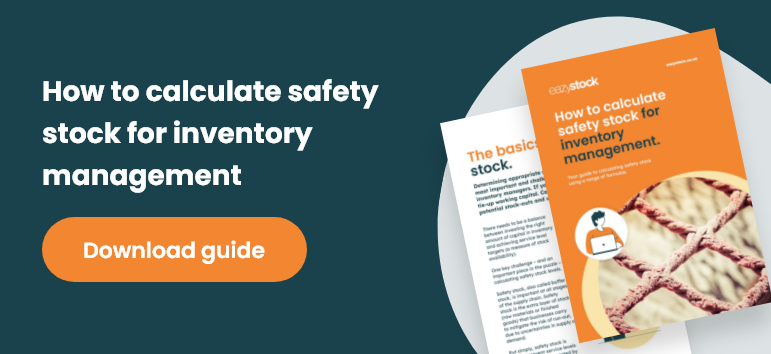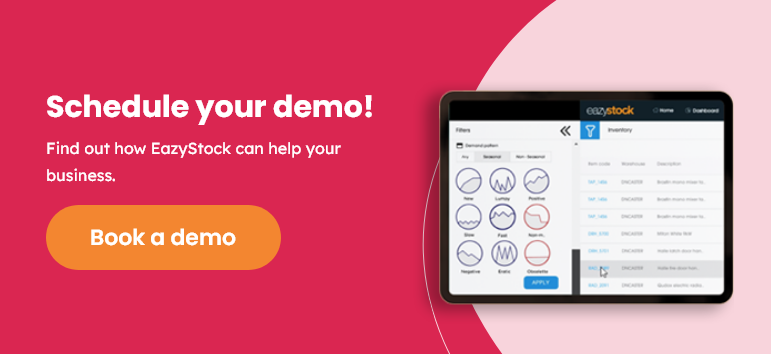Importance of safety stock in inventory management (2024 Guide)
What is safety stock?
Safety stock, sometimes called buffer stock, is an important aspect of inventory management and should be considered at all stages of the supply chain. Safety stock is the extra level of stock (raw materials or finished goods) that businesses carry to mitigate the risk of run-out, due to uncertainties in supply or demand.
For example, manufacturers may carry safety stock of important components to ensure they can cope with sudden increases in demand and prevent a halt in production. Whilst distributors can use safety stock to mitigate the risk of longer supplier lead times that can cause stockouts.
In both cases, buffer stock is added to reorder point calculations to prevent service levels (stock availability) being negatively impacted by supply and demand variables. Read more about safety stock and reorder points.
The purpose of safety stock
The purpose of safety stock is to ensure that once you’ve used up your cycle stock (stock you were expecting to sell during a certain time period), you still have some contingency in place for any unexpected changes in demand or in supply. Accurately calculated safety stock is important to support great customer experiences.
Why do you need safety stock in inventory management?
Setting safety stock levels is a necessity for any business that wishes to add resilience to their inventory management processes and supply chain planning. Business that calculate and carry the right levels of safety stock will be able to:
- protect against unforeseen supply variations
- compensate for forecast inaccuracies
- prevent a fire-fighting mentality
- avoid stock-outs and keep customers happy
1. To protect against unforeseen variation in supply
Supply chains are longer and more globalized than ever before. As we’ve recently seen with the coronavirus pandemic, this makes them susceptible to disruption and delays that can have a knock-on effect to the rest of your operations.
For example, if your supplier is unexpectedly closed for a week or if your delivery is delayed in transit, your buffer inventory will help ensure you can still fulfil your customer orders.
2. To compensate for forecast inaccuracies (only when demand exceeds the forecast)
Not all items in your inventory will have consistent demand patterns. Some will have lumpy or erratic demand e.g there will be periods where demand is low, or non-existent and periods where it’s much higher. This makes it much more difficult to forecast upcoming demand accurately. In such situations safety stock can be used when demand exceeds the forecast.
Even if you have consistent demand for a certain item but one month you sell more than you forecasted, with safety stock inventory in place, you don’t sacrifice your customer service levels while you replenish.
3. To prevent a ‘fire-fighting’ mentality
The purpose of safety stock is to ensure your supply chain runs smoothly. With safety stock in place, your inventory management team will spend less time trying to locate and reorder ‘emergency stock’ and instead they can concentrate on fulfilling orders to customers. Also, with a reduced number of costly back-orders you’ll see benefits to your bottom line.
4. To avoid stock-outs to keep customer service and satisfaction levels high
The ultimate goal of safety stock is to keep your customers happy. While safety stock indisputably helps mitigate supply chain risks, it’s end goal is to make sure that you don’t run out of stock, so customers are satisfied with your service and keep coming back for more.
Safety stock is a ‘no-brainer’
Let’s face it, today’s marketplace is challenging for many businesses, with uncertainties around every corner. Safety stock is important to help mitigate the risks surrounding disruption to supply, and help deal with the consequences of inaccurate demand forecasts. With stock availability a crucial element to delivering great customer service, the importance of buffer stock should not be under-estimated!
To understand more about how EazyStock inventory optimisation software can help ensure you have accurate safety stock levels, contact us today on 0121 312 2992 or request a demo:
First published 24th April 2018, updated June 2021











